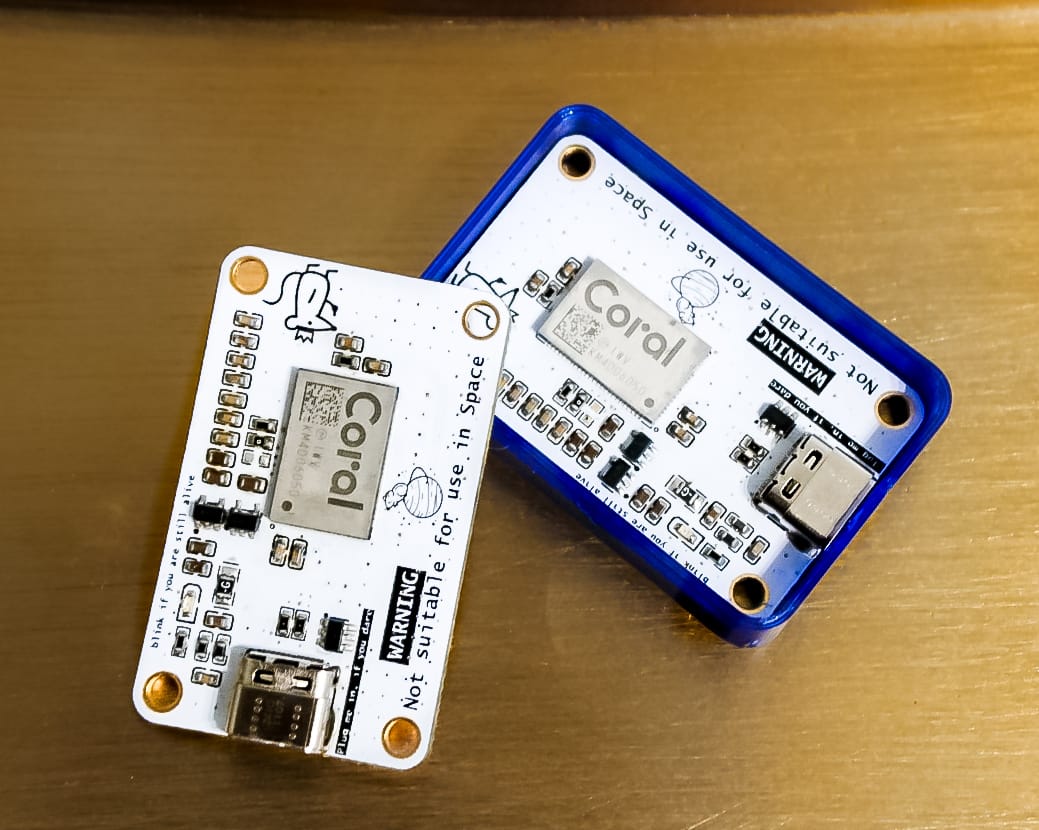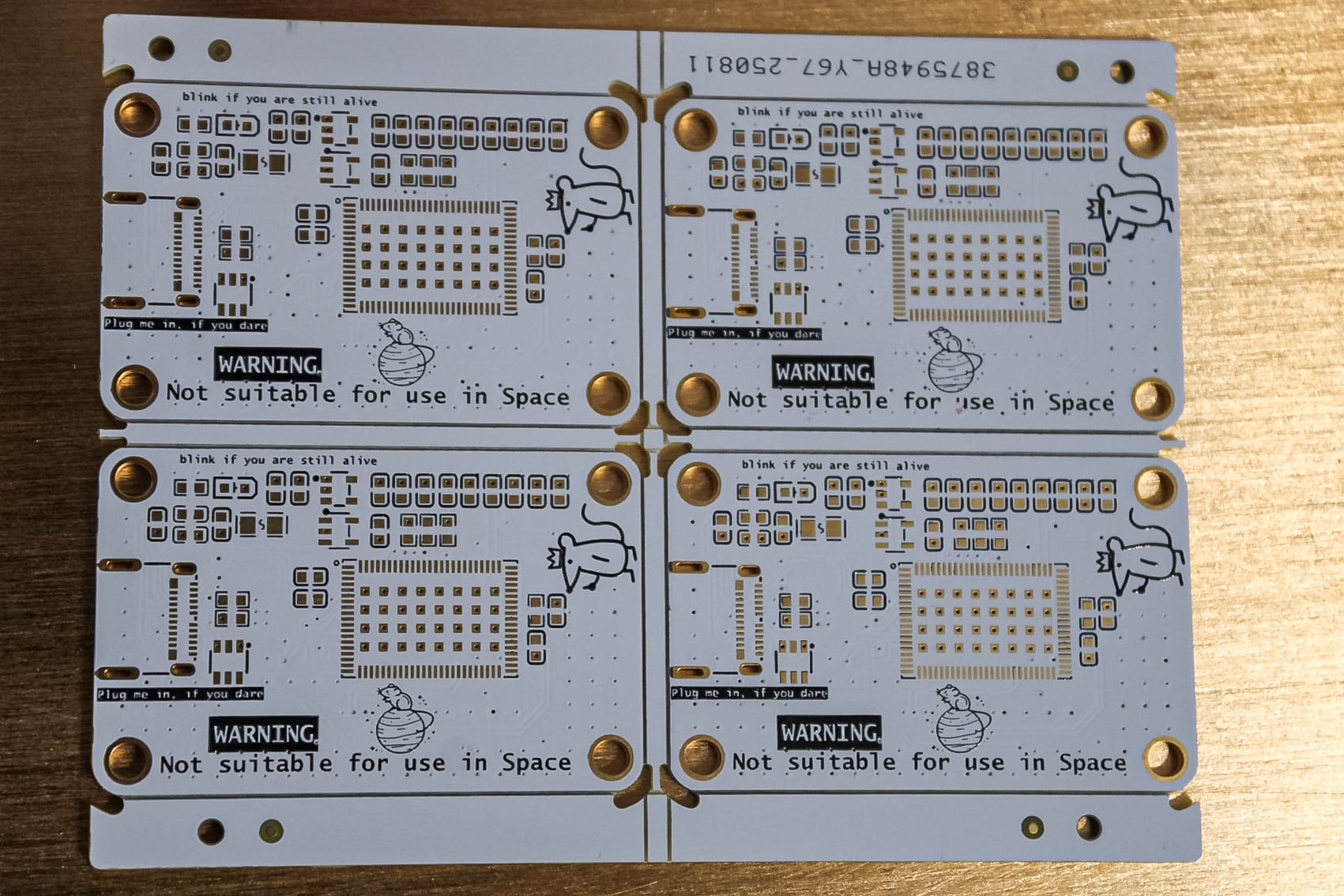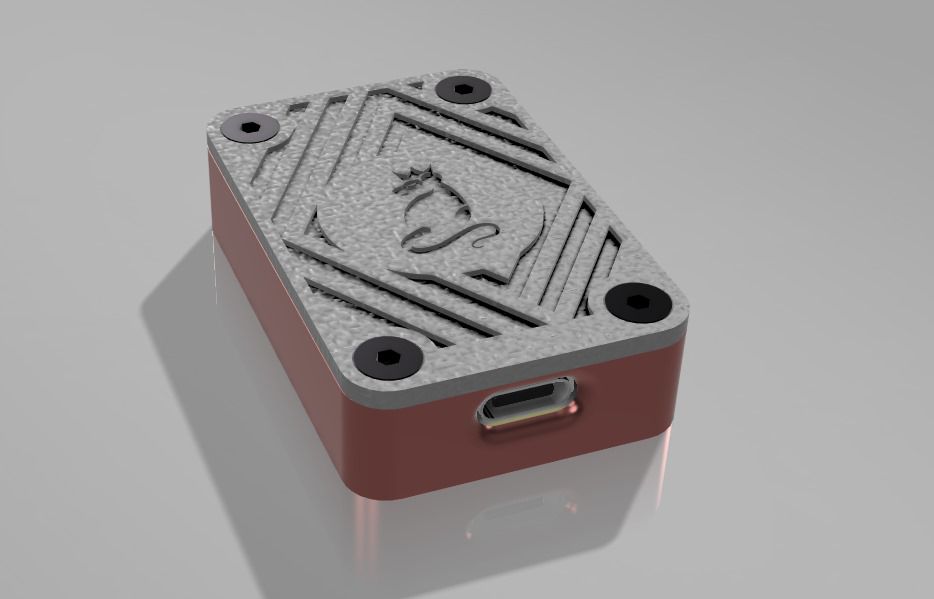Small but Ambitious
Coral is the smallest piece of hardware we have ever built and somehow also one of the most ambitious. It is a compact AI accelerator that looks unassuming until you see what it does. Coral takes the heavy lifting of machine learning models like image classification, terrain segmentation, and anomaly detection and runs them in real time on a board small enough to disappear into your pocket. It is the little accelerator that could, designed to sit at the edge of the system and quietly turn raw data into decisions without ever phoning home.
Coral started as a side experiment, something hacked together on a desk covered in jumper wires, coffee stains, and questionable design choices. But like every Shobolinsky prototype, it refused to stay “just a prototype.” It grew into a core technology that now sneaks its way into rovers, drones, and telescopes. When you only have a few watts and a few square centimeters, every decision matters. Coral embodies that constraint and then bites back at anyone who doubts it.
“Coral is the little accelerator that could.”

Inside the Board
Inside is the Google Edge TPU, a chip meant for low power, high throughput inference. We built our own board around it, adding custom power management, USB and PCIe routing, and a lightweight scheduler that treats each Coral like a worker in a union that doesn’t sleep. A single unit can push through tens of thousands of cutouts per second while sipping just a few watts. Link a few together and they scale into reefs, clusters that survive hardware failures by design. Even a single Coral is enough to change how a rover, a drone, or a telescope thinks.
The PCB looks polite, but it’s hiding scars from countless battles with routing, impedance, and thermal headaches. PCIe lanes squeezed in next to USB. Voltage regulators that looked fine on paper until they cooked themselves in the lab. The power stage ended up oversized because, well, we prefer to over-engineer rather than rebuild a crater. Fragile? Yes. But fragility is part of the fun. Shobolinsky thrives on building armor around fragile ideas until they start looking indestructible.

Why Edge Matters
Instruments in space or on the ground produce oceans of data but only a trickle can ever be sent back. Waiting for ground processing is like mailing your homework across the continent and praying for feedback before the deadline. Coral makes the thinking local. A rover can identify terrain in real time, choose a path, and send back only what matters. A telescope can filter stars, galaxies, and anomalies before the data even leaves orbit. A drone can dodge an obstacle and replan faster than a human pilot could blink. Edge computing isn’t just faster, it’s survival.
Already in the Wild
We already use Coral across Shobolinsky projects. Lunomyss is slated to run a Coral for navigation and sample processing. Aetheromyss will take one airborne for onboard AI once it finally leaves the workshop bench. On the research side, we train and run our own models locally on Coral: FuzzyWuzzy-1 and FuzzyWuzzy-2 specialize in celestial object detection, while their mischievous sibling LightyDimmy hunts exoplanets by watching for stars that “blink” at us. It’s unhinged naming, but surprisingly solid science.
These models chew through telescope data that would drown a laptop. They flag galaxies, stars, and anomalies before most people would have finished their coffee. In the lab, Coral has already processed Euclid telescope cutouts at a pace that used to require racks of servers. The board thrives where power is scarce, connections are dead, and every second counts. Exactly the kind of battlefield where Shobolinsky is happiest.

Fragile but Surviving
Coral overheats if you look at it wrong. It fails under stress. It was never meant for space. But that’s fine. Fragility is raw material, and Shobolinsky is built on turning raw material into chaos-resistant machines. We stack redundancy, add thermal hacks, and write schedulers that babysit every Coral like a paranoid helicopter parent. Each one survives long enough to be useful. Together, they become something greater.
Why It Matters
Coral matters because it proves that edge AI is not a nice idea, it’s already here. It shows that autonomy doesn’t need a datacenter, just a chip with the right architecture and a team stubborn enough to push it past its comfort zone. It’s the little accelerator that could, and it’s slowly becoming the backbone of everything else we build.
“Autonomy does not need a datacenter, just a chip with the right architecture and a team stubborn enough to push it.”
The Next Reef
Coral is no longer just a board, it’s a philosophy. Small, modular units working in clusters, each carrying just enough intelligence to survive failure and recover as a swarm. The next step is scaling into what we call the Great Coral Reef: dozens of units, resilient by design, running AI where it matters most, at the edge of possibility.



